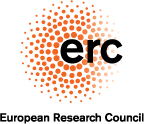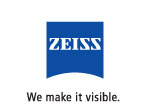European Research Council - 13:00 - 13:30 (Room B, Level -1) on Sunday 5 September
|

The European Research Council & its Starting Grant Scheme
Speakers:
Dr. M. Pia Cosma (ERC Starting Grantee 2009), Centre for Genomic Regulation, ES
Dr. Jhansi Kota, Scientific Officer, ERC Executive Agency, BE
|
The European Research Council (ERC) supports investigator-driven frontier research through open and direct competition. One of the two types of grants (up to five years) that the ERC offers is the Starting Independent Researcher Grant. The objective is to support researchers who are at the stage of starting or consolidating their own independent research team or programme. The session will provide practical information for potential applicants (ERC Starting Grant 2011 Call for Proposals is now open) and includes an ERC grantee who will present their own personal experiences with the scheme. |
|
|
|
| Sigma Aldrich - 13:30 - 14:00 (Room A, Level -1) on Sunday 5 September |

Sigma Aldrich
ZincFinger-Nucleases, Innovative Technology for Gene Regulation
Speaker: Lars Knoch, DE |
|
|
Rational genome engineering in mammalian cells is of enormous potential across basic research, drug-discovery as well as cell-based medicines. To this end, Sangamo Biosciences and Sigma-Aldrich have recently partnered to commercialize a novel technology that enables high-frequency genome editing via the application of designed zinc fi nger nucleases (ZFNs). Within these chimeric proteins the DNA binding specifi city of the zinc fi nger protein determines the site of nuclease action. Such engineered ZFNs are able to recognize and bind to a specifi ed locus and evoke a double-strand break (DSB) in the targeted DNA with high effi ciency and base-pair precision. The cell then employs the natural DNA repair processes of either “homology-directed repair (HDR)” or “non-homologous end joining (NHEJ)” to heal the targeted break. These two pathways provide the investigator with the ability to provoke three unique outcomes in genome editing – gene correction, gene deletion and targeted gene addition. Furthermore, the speed and effi ciency of this process enables us to knockout multiple genes in the same cell. Drawing from our work with transformed cell lines, primary human cells, and multi-potent stem cells, we will present several examples of single, double and triple gene knockout, as well as targeted gene insertion into native chromosomal loci.
|
|
|
|
|
Eurofins MWG Operon - 12:30 - 13:00 (Room H2, Level -1) on Monday 6 September
|
|

De-novo sequencing of genomes & transcriptomes & targeted
resequencing of large genomic regions & exomes - technology & examples
Speaker: Dr. Georg Gradl, Eurofins MWG Operon, DE
|
|
Using a combination of shotgun and long paired end libraries with different jumping distances it is possible to de-novo sequence genomes of any size and assemble the reads to very large contigs and scaffolds. Normalised cDNA libraries, especially developed for the long read Titanium chemistry allow the ultra deep analysis of transcriptomes. Sequence capture of large genomic regions or complete exomes enables targeted re-sequencing for the detection of mutations or disease related rare alleles.For each of these applications the technology will be explained and demonstrated with examples.
|
|
|
|
Leica Microsystems B.V - 12:30 - 14:00 (Room H1, Level -1) on Monday 6 September
|
|

Resolution Limits the cutting edge for Life Sciences: Super Resolution & High Content Screening |
|
Leica Microsystems B.V will offer three 30 minute lectures of 30min about the following topics:
- High content screening as a fundamental tool in science
- Super Resolution: the next step in microscopy
- Recent advances in Microscopy and the benefits for Science.
|
|
|
|
Carl Zeiss MicroImaging GmbH - 13:30 - 14:00 (Room H3, Level -1) on Monday 6 September
|
|

SIM, dSTORM and PAL-M: Three Ways to Outsmart Resolution Limits |
|
Recently, several light microscopy methods were developed, which are capable of resolving specimen details beyond the classical diffraction limit. Among these approaches are structured illumination microscopy (SIM) [1], photoactivated localization microscopy (PAL-M) [2], and direct stochastic optical reconstruction microscopy (dSTORM) [3]. An introduction to the fundamentals of these techniques will be presented. For SIM, a periodic light pattern is used to excite fluorescence in the specimen, improving resolution two-fold in x, y and z. In contrast, PAL-M and dSTORM rely on the localization of single fluorescent molecules per time. Here, resolution is only limited by the statistical significance of the measurement and a localization precision below 20 nm has been demonstrated.
[1] Gustafsson, M. G. L. (2000). Journal of Microscopy, 198(2), 82-87.
[2] Betzig, E., et al. (2006). Science, 313(5793), 1642-1645.
[3] Heilemann, M., et al. (2009). |
|



